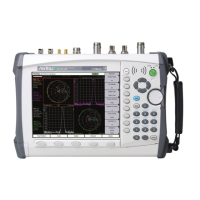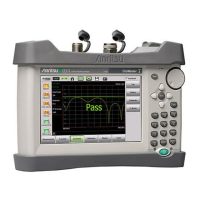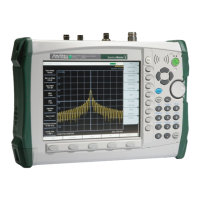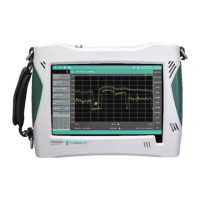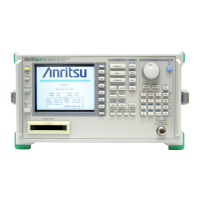Glossary of Terms
H-6 PN: 10580-00305 Rev. J MS20xxC UG
RBW : Resolution Bandwidth (RBW) With spectrum analyzers, a
narrow band filter is swept across a frequency span to create the
spectrum display. The filter bandwidth (RBW) determines the
frequency resolution across the frequency axis.
Signal loss : Signal loss is the amount of signal strength that’s lost in antenna cable,
connectors, and free space. Signal loss is measured in decibels.
Smith Chart : A Smith Chart is a graphical aid for electrical and electronics
characteristics in radio frequency (RF) circuits. Smith Chart was
invented by Phillip Smith at Bell Laboratories in 1939. The
chart can be used to display multiple parameters, such as impedance,
and admittance.
S-parameter : S-parameters are scattering parameters, and are a signal ratio of
reflection and transmission measurements. For a 2-port network, four
fundamental S-parameters can be measured, and they are defined as
Sxy (where x and y are subscripts of S). The first number (x) is the port
number into which the signal is being injected, and the second number
(y) is the port number from which the signal is leaving. The
S-parameter is the ratio of these two signals. S11 is Forward Reflection.
S21 is Forward Transmisssion. S12 is Reverse Transmission.
S22 is Reverese Reflection.
TMA : A Tower Mounted Amplifier (TMA) amplifies signals from an antenna
to reduce the noise figure of a base transceiver station (BTS). This helps
to improve the overall sensitivity of the BTS. A TMA is a
low-noise amplifier (LNA) that is usually mounted as close as practical
to the antenna in Base Transceiver Stations or in mobile masts. When
using a TMA, the antenna is able to receive weaker signals.
ООО "Техэнком" Контрольно-измерительные приборы и оборудование www.tehencom.com
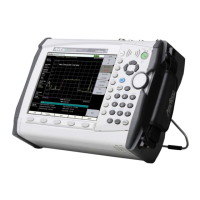
